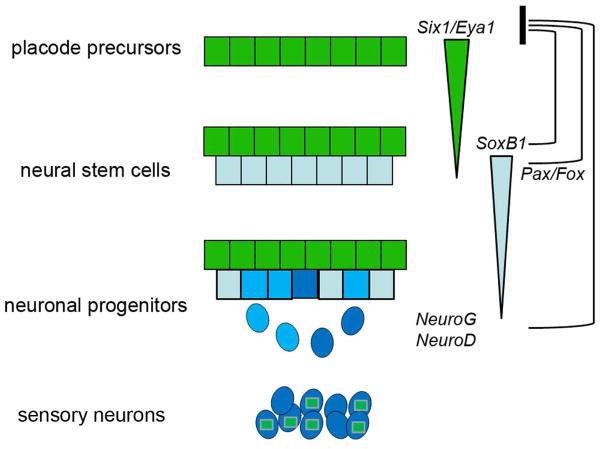Figure 6.
A model of the gene regulatory pathway proposed to control the onset of neurogenesis in neurogenic placodes that form sensory ganglia of cranial nerves V, VII, IX and X. Six/Eya maintain proliferative, undifferentiated placode precursors (dark green). Six/Eya are required for the expression of SoxB1 genes in neural stem cells (light blue), which are only detected in the deeper-positioned cells in the placode once Six/Eya protein levels decrease. SoxB1 genes are required for the expression of bHLH neural progenitor genes (darker blue), which are only detected once the levels of SoxB1 protein decrease. NeuroG (medium blue) is detected in the deeper layer of the placode and in delaminating cells. Later, NeuroD (dark blue) is detected in these same cells and in the sensory neurons in the coalescing ganglion. These neurons re-express Six/Eya genes (green squares), which are required for cell survival. Several studies indicate that the genes expressed at each step of the process, including Pax and Fox genes that are involved in placode identity, feedback (black bars) to negatively regulate Six/Eya genes, thus promoting differentiation.

